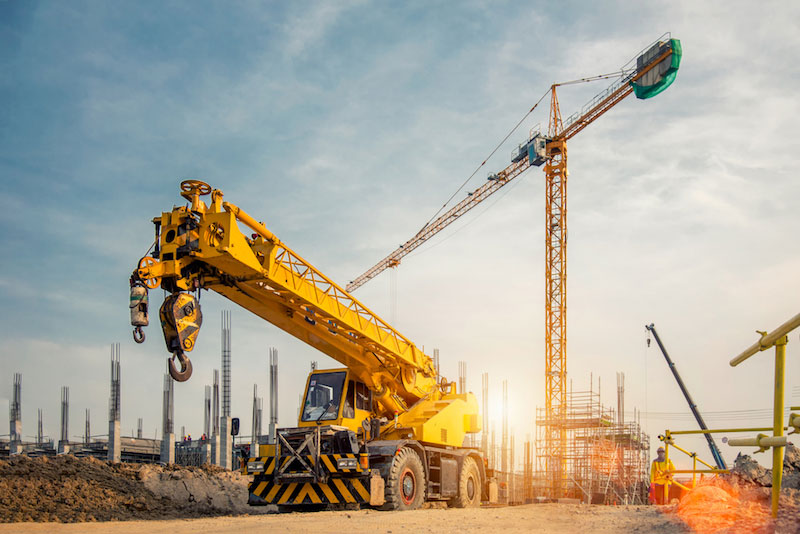Leasing Vs. Acquiring Building And Construction Tools: Making the Right Selection for Your Task
When starting a building project, one of the important choices that project supervisors and stakeholders face is whether to acquire or rent out construction tools. Both options have their advantages and downsides, making the selection a pivotal one in the job preparation process. The decision rests on numerous factors such as cost factors to consider, task duration, equipment maintenance, flexibility, threat, and scalability management. Each element plays an important duty in establishing the most suitable path for the task's tools needs. boom lift rental. Allow's discover these factors further to recognize just how they influence the decision-making process and ultimately the success of the task.
Price Considerations
When evaluating the economic aspect of renting out versus getting construction equipment, the long-lasting expenditures and upfront prices have to be meticulously taken into consideration. Renting out devices often calls for reduced initial repayments compared to buying, making it an attractive option for short-term projects or professionals with spending plan restrictions. Renting eliminates the requirement for huge capital investments and lowers the monetary risk linked with devices possession, such as maintenance and devaluation costs. However, in the future, consistently renting tools can collect higher expenses than purchasing, particularly for extensive jobs.
On the various other hand, acquiring building tools includes higher ahead of time expenses yet can result in long-lasting financial savings, especially for lasting jobs or constant users. Eventually, the choice between purchasing and leasing building tools pivots on the job's duration, frequency of usage, budget plan factors to consider, and long-term financial goals.
Task Duration

Alternatively, for long-lasting projects or ongoing construction job, buying tools can be the more cost-effective alternative. Getting tools can lead to set you back savings over time, especially if the equipment will be regularly used. Moreover, owning devices offers a feeling of control over its availability and permits personalization to fit particular project demands.

Equipment Upkeep
Given the crucial role task duration plays in establishing the most economical approach between renting out and buying building and construction tools, the focus now changes towards examining the crucial aspect of devices maintenance. On the various other hand, having tools requires a proactive strategy to upkeep to avoid malfunctions, make certain safety, and extend the equipment's life expectancy. Ultimately, a well-kept building and construction equipment fleet, whether leased or possessed, is essential for the effective and effective completion of building jobs.
Adaptability and Scalability
In the realm of building equipment administration, the aspect of versatility and scalability holds significant importance for project efficiency and source use. Opting to lease building and construction devices provides a high degree of adaptability as it permits the quick modification of devices kinds and quantities based on the progressing demands of a project. Leasing makes it possible for specialists to access a variety of specialized equipment that might be required for specific jobs without the long-lasting commitment of possession. This adaptability is especially helpful for tasks with varying demands or unsure periods (scissor lift rental).
Renting construction equipment offers the advantage of easily scaling procedures up or down as task needs vary. Professionals can quickly add or trade devices to match the project's altering needs without the restrictions of owning properties that may come to be underutilized or obsolete.
Threat Monitoring
Reliable threat monitoring in construction equipment procedures is critical to ensuring project success and mitigating prospective monetary losses. Building and construction jobs inherently involve different dangers, such as equipment breakdowns, crashes, and job delays, which can significantly influence the task timeline and spending plan. By thoroughly thinking about the dangers associated with owning or renting out building and construction devices, project supervisors can make informed choices to reduce these prospective risks.
Renting out building tools can use a degree of danger mitigation by moving the obligation of repair and maintenance to the rental business. This can minimize the economic burden on the task proprietor in instance of unanticipated devices failings (heavy equipment rental). In addition, renting provides the versatility to gain access to customized devices for certain project stages, reducing the danger of possessing underutilized machinery
On the various other hand, owning building tools provides a sense of control over its usage and maintenance. Nonetheless, this likewise implies bearing the full obligation for repairs, maintenance costs, and devaluation, raising the financial risks connected with tools possession. Cautious danger analysis and factor to consider check this of factors such as project duration, tools application, and upkeep demands are essential in identifying one of the most ideal option for effective danger monitoring in building and construction jobs.
Conclusion
In final thought, when making a decision in between renting out and getting building devices, it is very important to consider price, job duration, devices upkeep, risk, flexibility, and scalability management. Each element plays a crucial that site duty in figuring out one of the most ideal choice for the task at hand. By meticulously reviewing these elements, task managers can make an informed decision that straightens with their spending plan, timeline, and overall project objectives.
